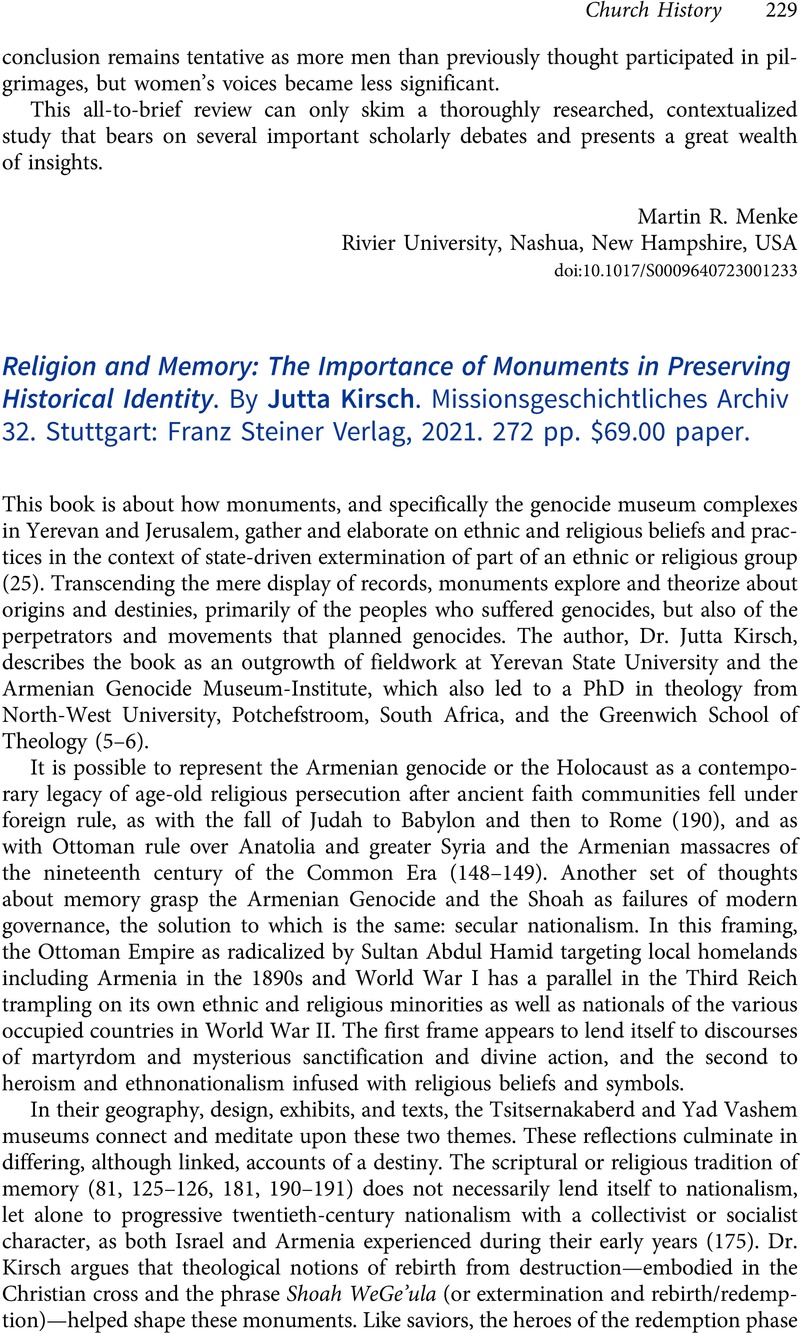No CrossRef data available.
Article contents
Religion and Memory: The Importance of Monuments in Preserving Historical Identity. By Jutta Kirsch. Missionsgeschichtliches Archiv 32. Stuttgart: Franz Steiner Verlag, 2021. 272 pp. $69.00 paper.
Review products
Religion and Memory: The Importance of Monuments in Preserving Historical Identity. By Jutta Kirsch. Missionsgeschichtliches Archiv 32. Stuttgart: Franz Steiner Verlag, 2021. 272 pp. $69.00 paper.
Published online by Cambridge University Press: 28 July 2023
Abstract
An abstract is not available for this content so a preview has been provided. Please use the Get access link above for information on how to access this content.

- Type
- Book Reviews and Notes
- Information
- Copyright
- Copyright © The Author(s), 2023. Published by Cambridge University Press on behalf of American Society of Church History
References
Eccarius-Kelly, Vera (2020). ‘Do I Even Exist?’ Kurdish Diaspora Artists Reflect on Imaginary Exhibits in a Kurdistan Museum’, in Rey, Virginia ed., The Art of Minorities Cultural Representation in Museums of the Middle East and North Africa, 241–267 (Edinburgh: Edinburgh University Press, 2020), 247–49.Google Scholar


